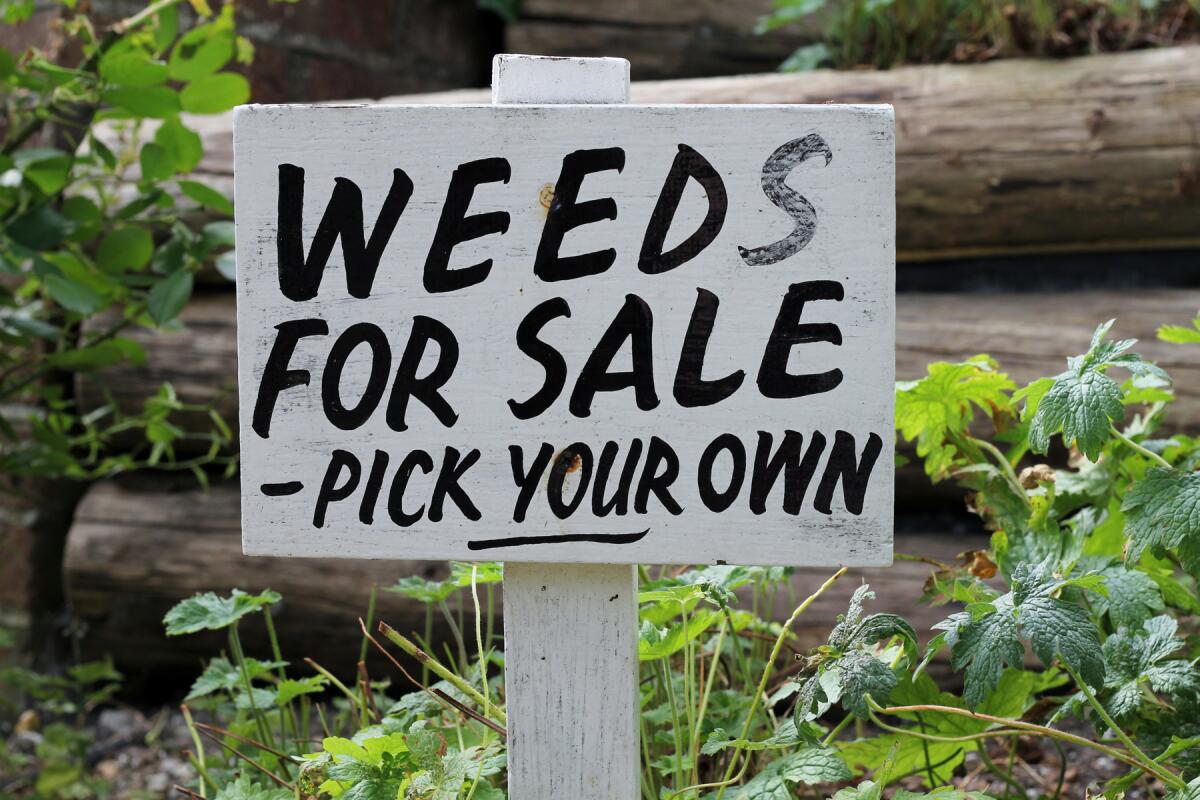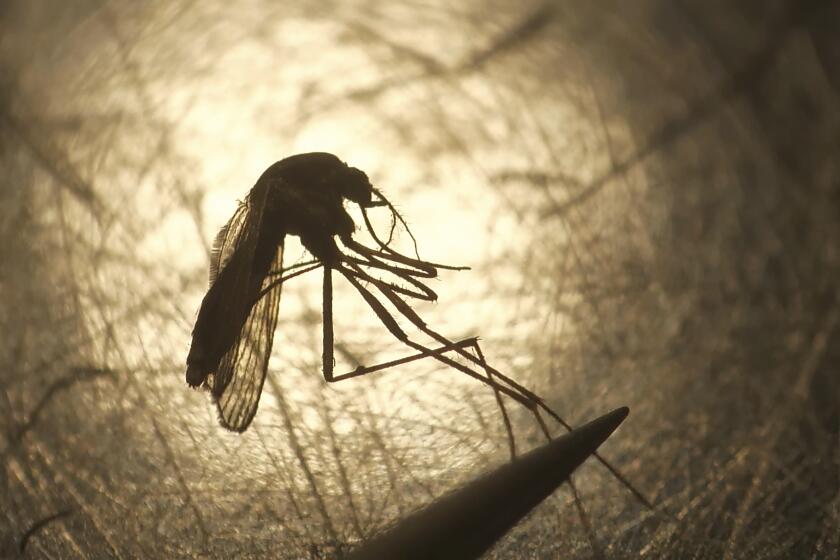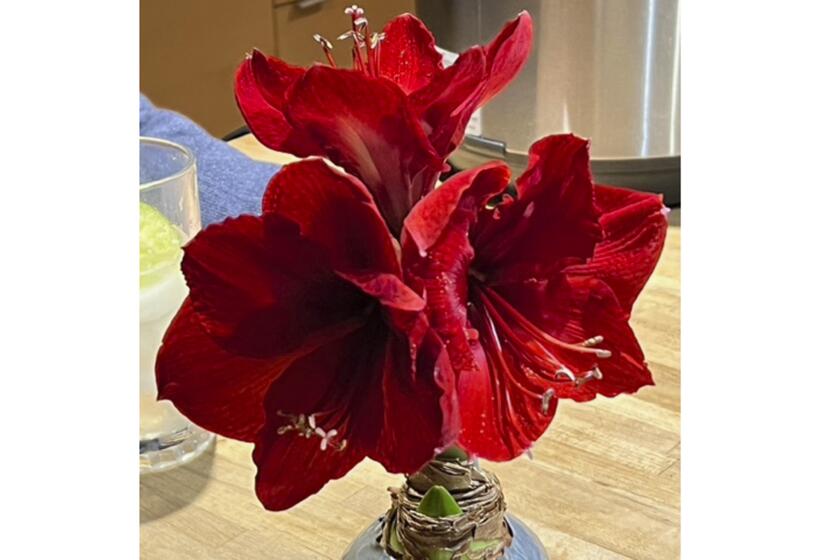Gardening: Some snippets for you

Every so often, some of us gardeners mutter: “I sure hope this works.”
Snippets are small bits of information that are sometimes helpful, sometimes not. Forget about planting bottle corks and expecting wine bottles to pop up. Likewise, planting bacon seeds will leave your BLTs missing a key ingredient.

Hopefully, the following snippets will be more beneficial:
For you believers in weeds, stop, take a peek under there in a couple of months and see that you just killed your dirt. Save your money and your soil and pile on the mulch (no cost from tree-trimming companies) and compost (reasonably priced at stores). I stop at our roof line. A more conservative approach would be 3” to 4” of mulch and replenish as needed to minimize weeds and to retain moisture.
Attention Costco shoppers. And Ralphs, Sprouts, & Walmart shoppers, too. For those dozen or so courageous, adventuresome souls out there who refuse to be ordinary, try Rambutans. They’re imported from another planet and look like aliens on bad hair days. Actually, they remind me of those little spikey balls from the Liquidambar tree. To enjoy, simply peel the outer skin to find a large grape-like fruit that’s juicy and sweet. Tastes great. Less filling. Relative of the Lychees.
Got your eye on that ‘22 Lamborghini? You can save up your money for one by growing your own saffron. Saffron is worth roughly half a million dollars. Okay, maybe not even close to that, but it is one of the most expensive spices in the world because of the time and effort it takes to harvest those red stigmas.
According to Bon Appétit magazine, “each flower produces only three threads of saffron, and it blooms for only one week each year. The saffron must be harvested — by hand! — in the mid-morning, when the flowers are still closed in order to protect the delicate stigmas inside.
It takes about 1,000 flowers to produce just one ounce of saffron. That’s why you’ll pay $10 to $13 per gram for the real deal. It’s harvested from the Crocus sativus bulb. Make sure you’re not planting the autumn crocus (Colchicum autumnale), which is poisonous.
So, get out your tweezers, start plucking those stigmas and head down to the nearest dealership. And meet their security staff.
It’s okay to water on sunny days. The water droplets don’t act like magnifying lenses and burn the leaves. Water droplets actually evaporate before they can do harm. However, it’s still recommended to aim water at the base of the plant, and to avoid watering during the heat of the day, when water quickly evaporates. The diffused rays of the sun are not powerful enough to cause burning through water droplets on a plant’s leaves.
If it were the case, farmers would encounter huge losses after each daytime rainstorm. The best time to water most garden plants is early in the morning because of a lower evaporation rate, and to minimize foliar diseases. But if you are left with no other choice, watering midday will not harm your plants. Source: Journal of the NACAA, https://www.nacaa.com/journal/
Roses have many relatives and include many of our favorite fruits. Almonds, apples, apricots, blackberries, cherries, loquats, peaches, pears, plums, quinces, raspberries and strawberries all belong to the Rosaceae family. The only thing left is jackfruit, which belongs to the bowling ball family.
The advice to add pine needles to make your soil more acidic is well-known for growing acid-loving plants such as azaleas, blueberries and rhododendrons. Since pine needles are acidic, they will acidify your soil. Right? Maybe not.
“Fresh pine needles, taken straight from the tree, are ever-so-slightly acidic. Once they’re shed, they quickly lose that acidity. That means that old dried-out needles under a pine tree are, in fact, not at all acidic and will have no effect whatsoever on soil pH.” Source: edited excerpt from ttps://extension.oregonstate.edu/news/myth-vs-reality-whats-truth-behind-some-common-gardening-practices
Adding sugar to the soil is sometimes suggested as a great way to give tomatoes extra sweetness. But, according to “Decoding Gardening Advice: The Science Behind the 100 Most Common Recommendations” (Gillman & Maynard), there’s no correlation between a sweet soil and the sweetness of the fruits. Instead, choose varieties known for their sweet taste.
Proper feeding, regular watering, organic matter, and ample sunlight should help to develop the tomato’s fullest flavor. Large tomatoes, e.g., beefsteak, are less sweet. Grape and cherry tomatoes are often sweeter than larger tomatoes like beefsteaks. Vine ripen tomatoes equal sweet tomatoes.
Another snippet I’ve heard is that planting Cheerios won’t grow donuts. I’m going to keep working on that one because it’s hard for me to pass up those glazed donuts. I sure hope this works.
Schmidt is a Poway resident with over 40 years of gardening experience.
Get the Pomerado News in your inbox weekly
Top headlines from Poway, Rancho Bernardo and 4S Ranch, every Thursday for free.
You may occasionally receive promotional content from the Pomerado News.





